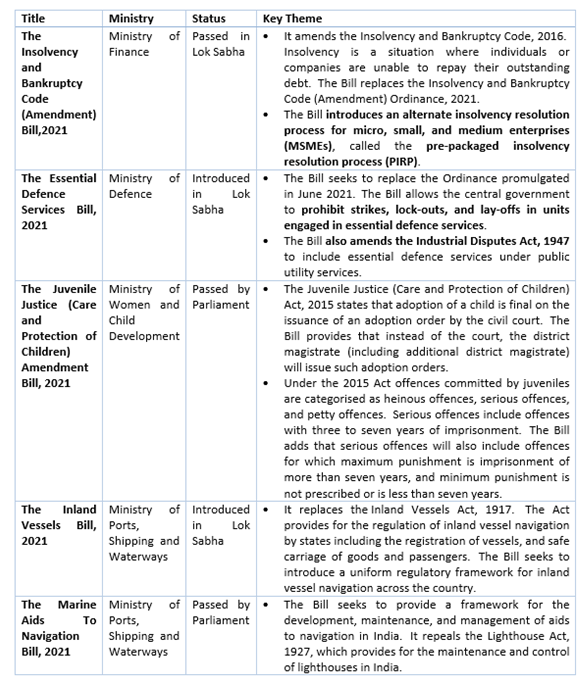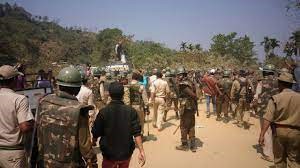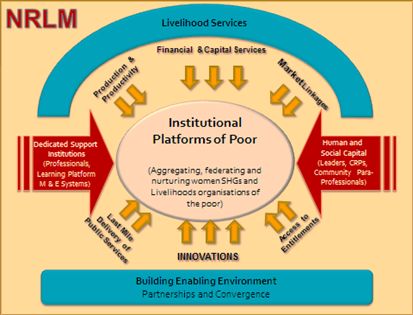Friday, 30th July 2021
Power Purchase Agreements (PPA)
In News
Punjab government ordered to cancel or revisit all one-sided PPAs with private companies that are not contractually obligated to supply sufficient power to meet the state’s peak demand during the paddy sowing and summer seasons.
Power Purchase Agreement (PPA)
- PPA is both a legal and a commercial document between a power producer as seller and the wholesale energy purchaser (the state electricity boards), as buyer.
- The PPA states the obligations of the power producer to produce and deliver power to specified points and further sets out the price at which such power will be purchased.
- PPA usually runs for around 20-25 years. The PPA is often regarded as the central document in the development of independent electricity generating assets (power plants), and is a key to obtaining project financing for the project.
Challenges faced by the Power Purchase Agreement
- India is now an electricity surplus country with an installed capacity of over 369,000 megawatts (MW) against its peak demand of 183,804 MW in 2020. Peak demand has plummeted during the country’s current lockdown. This has made India’s excess capacity problem even worse.
- DISCOMs, however, had signed earlier PPAs with suppliers that generate electricity. Larger supplies have been tied up through these deals than there is demand for.
- By 2017-18, the country had around 334,000 MW of installed capacity, of which 291,000 was under long-term PPAs. Competitive procurement has meant declining tariffs both for conventional and renewable energy. DISCOMs have been in poor financial health, and many are keen to renegotiate their PPAs.
- Indian states have signed long-term PPAs for about 90-95% of their peak demand. In several states, contracted capacity is 30% in excess of peak demand. Maharashtra, for example, has deals for 37,896 MW of supply, while its peak demand is 22,516 MW.
- DISCOMs cannot trade their contracted supplies. They have the option of selling energy bilaterally or through the power exchanges, but participation in these market mechanisms remains minimal in India. While PPAs are long-term contracts, they have no provision to accommodate future contingencies—such as a sudden fall in demand for electricity.
- PPAs with central generating stations neither have an option to exit the contract, nor provisions for a review of terms and conditions. The deals with independent power producers vary significantly, but they have no exit clauses.
Way Forward
- PPA contracts need to have elements of flexibility to address unforeseen situations.
- With decreasing costs for renewable energy projects, PPAs of 7-10 years could be long enough to recover cost. Many of today’s PPAs run much longer (20-25 years). India should consider the redefinition of contract tenures.
- Renegotiation can be a positive instrument of contract management if done in an accountable manner.
- India should also deepen its power market and promote the trading of power supplies.
Sources:
CIL takes initiative to produce sand from overburden at much cheaper price
In News: State-owned Coal India Limited (CIL) has taken an out-of-the-box initiative to produce sand from overburden at a much cheaper price. It is a 5 year roadmap by CIL aimed at minimizing environmental pollution from sand siltation and illegal sand mining, to produce sand from overburden.
What is Overburden?
- During opencast mining of coal, the strata lying above coal seam is known as overburden.
- It comprises of clay, alluvial sand, and sandstone with rich silica content.
- The overburden is removed to expose and extract coal from beneath.
- After completion of coal extraction, the overburden is used for back filling to reclaim the land in its original shape.
- Initiative has been taken to utilize at least 25 per cent of overburden in converting to sand by crushing, sieving and cleaning.
Significance of the Initiative
- The initiative will not only help in minimising environmental pollution due to sand siltation from overburden but will be also an option for getting cheaper sand for construction purpose.
- Sand at cheaper price can be used for constructing low-cost houses under the Pradhan Mantri Awaas Yojana (PMAY).
- The use of overburden will minimize the volume of land required for overburden dump.
- This effort will help the society at large by minimizing river-bed mining of sand.
Other Government Initiatives to check Sand Mining
- Illegal sand mining is being addressed at the district level under the Sustainable Sand Mining Management Guidelines, 2016.
- Sand Mining Framework 2018, Enforcement and Monitoring Guidelines for Sand Mining 2020, Promotion of Fly Ash use in Cement Production and Construction activities, Promotion of M-sand (manufactured sand) through State level policies are other such initiatives.
Sources:
Big Techs and Geopolitics
In News
The coronavirus pandemic has brought economic disruption on a global scale, but the big techs have marched on throughout the chaos, which has prompted increased political scrutiny and the threat of heightened regulation from countries.
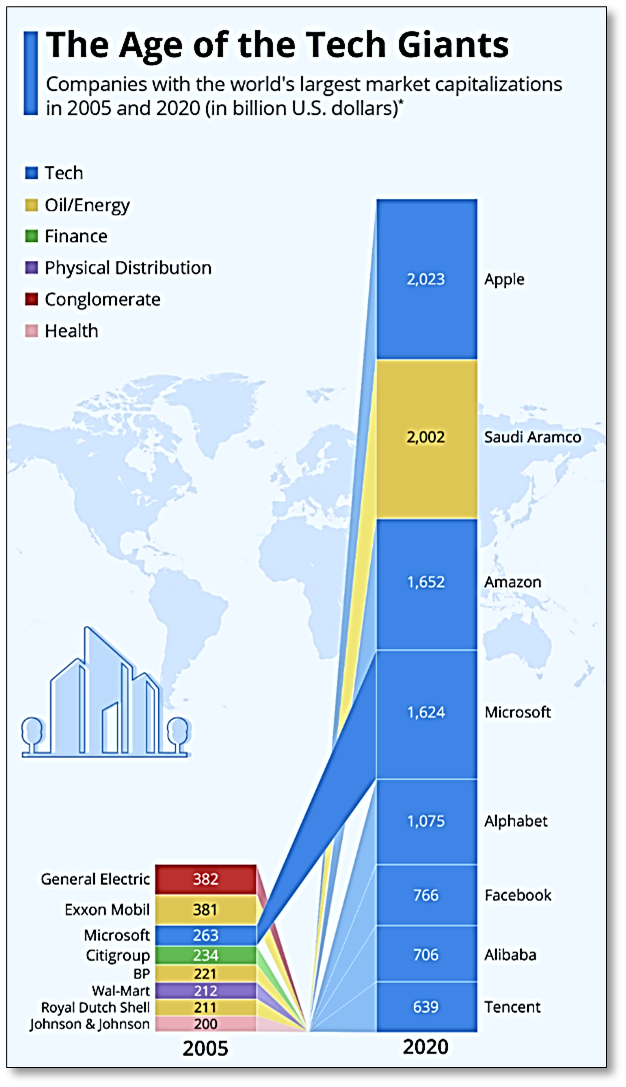
What are Big Techs?
- Big Tech is a term that refers to the most dominant and largest technology companies in their respective sectors.
- Their products and services are used globally and have become heavily relied upon by businesses and individuals alike, bringing up privacy, safety and Antitrust concerns about their influence and operations and whether strict regulations should be considered.
- A group of companies known as "The Four," as well as the "Four Horsemen" or "GAFA”, all started and have primary headquarters within the United States. They are Google, Amazon, Facebook, and Apple.
What are the factors leading to influence of Big Techs on Geopolitics?
- Changing role of Big Techs: Over the past 20 years, Big Tech companies have grown significantly. They've changed the way businesses and individuals use technology in their everyday lives.
- Safe-harbour provisions: These provisions in some countries, like USA, along with self-regulation principles have allowed Big Tech to cherry pick what is to be acted on and what is to be ignored, effectively making it the arbiter of permissible speech. For example, anti-vaccine Twitter users have thrived during the pandemic, while less dangerous actors have had their posts labelled.
- Information Networks: Facebook and Google are information networks that have become the infrastructure through which we understand the world, perceive power, and legitimacy. The process of collecting and organizing information is now a tremendous source of economic, political, and cultural power.
- Frontier Technologies: They have a high monetary worth. By 2035, 5G is expected to provide a total worldwide economic value of $13 trillion and 22 million employment. The fact that China and the US have declared or are planning massive investments in these disciplines sends a strong message about the geostrategic importance of these technologies in the near future.
- Investments by Big Techs: Companies have also sought increasingly to influence politics. Google overtook Goldman Sachs as the biggest spender on political donations for the first time in 2014. The six tech companies’ total spend on lobbying in the US had risen to $64m in 2019. This represents big tech’s increasing attempts to influence policy directly.
What has been and can be the result of this influence on Geopolitics?
- Data Diplomacy: The political, ideological, and economic tensions between, and within, authoritarianists and freer democracies is as much about competing domestic regulations, the renewed focus on anti-trust laws, and domestic standards on privacy legislations, as it is about international affairs.
- So, negotiators to shape data diplomacy like tech ambassador, ambassador of innovations, ambassador for digital affairs, and ambassador for cyber diplomacy are becoming increasingly common.
- Change in Traditional Diplomacy: Enhanced communication technologies can make traditional international diplomacy irrelevant as all necessary information could be obtained without having to engage in an exchange with our peers.
- This could disrupt and redefine the balance between hard and soft power, which in turn would shape the conduct of international relations and the importance of diplomacy.
- Surveillance capitalism: The biggest impact that technology will have on geopolitics depends on how we see the world – and thus how we hold power –which has been concentrated among a few “big tech” companies in what is called the “surveillance capitalism”. Therefore, the battleground for geopolitical influence will be centred on who owns the tech companies and which companies they own.
- Lead Role of Big Techs: Tech giants are taking a leading role in geopolitics, at times playing on their own and sometimes as proxies of nation states to influence policymaking and national regulations. The U.S.-China trade war, the position of governments on Huawei 5G technology, and Facebook’s attempt to implement internet.org are a few examples.
Concerns for India
- Privacy Concerns: Privacy has been a major concern as scandals such as Cambridge Analytica have surfaced over the years. As tech companies gather personal data without restrictions, the concern over how they can exploit the data grows.
- Loss of technological sovereignty: The nature of technology and data has placed tech giants such as Google, Facebook, and Amazon in a commanding position. At one time, these tech giants needed the support of governments everywhere. But now, with their global reach, it is governments that are dependent on them. Access to data on a majority of the population makes these giants stronger when they enter the negotiating room with governments.
- Safety concerns: It includes product development and business models, such as the development of facial recognition software and algorithms that amplify harmful content.
- Monopoly: Competition is a concern as the monopoly of these companies has prevented the creation of possible alternatives. Most of the discussions around competition and antitrust involve splitting up companies to create a more distributed playing field.
- Huge data creation in India: India is the largest open data market in the world. India also has the highest per capita consumption of data (above 10 GB per month) anywhere in the world. How open or closed will India be to the movement of data across its borders, is the moot question for the fast-growing number of global tech ambassadors.
Way Forward
- The post-COVID-19 world is expected to be different. Digital equity will require frameworks relating to governance of technology and data that look beyond geopolitical considerations. We need to establish a baseline of global norms of data governance that go beyond privacy and geopolitical considerations. These norms must focus on mechanisms to leverage data to solve problems and ensure consistency, interoperability, privacy and security.
- More urgently than before, India needs to consider what exactly it wants out of the fast-changing geopolitics around technology. This goes beyond banning Chinese apps or considering how India can absorb the slow move to diversify global supply chains. This is about ensuring India’s evolving domestic data architecture supports its international interests, with the clear view to benefit from the same. The aim must be to negotiate its weight in data and find the right balance for India’s future between localisation and internationalisation.
Question: Discuss the factors that are leading to change of geopolitics in the era of Big Techs. What are the concerns of for India w.r.t to this change?
Sources:
- What Impact Will Emerging Technologies Have on Geopolitics?
- India and the geopolitics of technology | Analysis
- Moving beyond geopolitics
- Big Tech and the State: The necessity of regulating tech giants
- Big Tech
- What is big tech and why we should care
- Big tech is now a geopolitical force – and that should worry us all
- 7 views on how technology will shape geopolitics
- How the Pandemic Reshaped Geopolitics, the Social Contract and Technological Sovereignty
- Is big tech now just too big to stomach?
This Day in History - Bismarck
On July 30th, 1898, Otto von Bismarck died at the age of 83. Bismarck was the prime minister of Prussia for almost thirty years and from 1871 to 1890 the first chancellor of the German Empire, which recognised him as its founder. Bismarck introduced progressive reforms—including universal male suffrage and the establishment of the first welfare state—in order to achieve his goals.

Sources:
Image of the Day - Star Sapphire Cluster
This is the image of World's Largest Star Sapphire Cluster, which has been unearthed by accident in a backyard in Sri Lanka. The sapphire cluster, which weighs around 510 kilograms or 2.5 million carats, was discovered in the house of a gem trader. The rock has been named the "Serendipity Sapphire." A star sapphire is a type of sapphire that exhibits a star-like phenomenon known as asterism.

Source:
Sujal-Drink From Tap Mission
- Context: Puri (Odisha) becomes India's first city to provide 24×7 drink-from-tap quality water to every house under Sujal Mission.
- The Sujal Mission was launched by the Odisha Government in 2020 to ensure quality tap drinking water for more than 1.5 million people residing in around 15 urban areas.
- The initiative has been launched under the ‘Jalsathi’ program by partnering with women self-help groups (SHGs) of Mission Shakti in community-led water supply management.
- The project has been implemented under the 5T initiative (Teamwork, Transparency, Technology, Transformation and Time) of the State government.
- The scheme includes 24x7 helpline centre with Interactive Voice Response System (IVRS) support for quick grievance redressal, mobile water testing laboratories and quick response team for timely address of supply related issues.
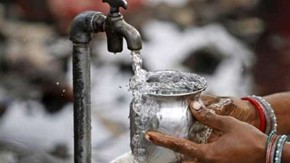
Source:
Kanjeevaram Silk Saree
- Context: Award winning artisan weaver, B Krishnamoorthy, has created a repository with samples of all the designs, patterns, and motifs traditional to Kanjeevaram silk sari weaving, preserving fine pieces for future generations.
- Kanchipuram silk sarees are woven from pure mulberry silk. The silk obtained from the mulberry worm is hand-processed to produce the Kanjeevaram silk.
- Kanchipuram silks are considered the queen of silk sarees.
- With origins from the Chola Dynasty, Kachipuram sarees today is considered as one of the oldest and rich legacy of the Indian textile industry.
- The temple architecture of south India has historically served as a mood board for design inspiration for the traditional Kanjeevaram motifs.
- It received the GI tag in 2005.

Source:
- The Kanjeevaram Legacy
- Silk: The Queen of Indian Handloom
- Kanchipuram Silk Sarees: Everything You Wanted To Know About the Nine-Yard Wonder
- Legacy of the Timeless Kaneevaram
Image Source:
SLDE and GHG Calculator
- Context: The Government has launched the "Secured Logistics Document Exchange" (SLDE) along with a Calculator for Green House Gas Emissions to improve Ease of Doing Business.
- The SLDE platform is a solution to replace the present manual process of generation, exchange, and compliance of logistics documentswith a digitized, secure, and seamless document exchange system using Aadhar and blockchain-based security protocols for data security and authentication.
- It will also provide a complete audit trail of document transfer, faster execution of transactions, lower cost of shipping and overall carbon footprint, easy verification of authenticity of documents, lowered risk of fraud, etc.
- The GHG Calculator is an efficient, user-friendly tool and provides for calculating and comparing GHG emissions across different modes.
- It allows for commodity-wise comparison of GHG emissions and total cost of transportation, including their environmental cost, between movement by road and rail.

Source:
Image Source:
King Chilli ‘Raja Mircha’
- Context: In a major boost to exports of GI products from the north-eastern region, a consignment of ‘Raja Mircha’ /King Chilli from Nagaland was exported to London.
- The chilli from Nagaland is also referred as Bhoot Jolokia/Ghost pepper.
- Bhoot Jolokia is considered the world's hottest chilli based on the Scoville Heat Units (SHU). (GI certification in 2008)
- The amount of capsaicin (a chemical compound) present in peppers is checked with the help of the Scoville scale.
- Capsaicin is responsible for making the tongue burn, body sweat, and ears turn red.
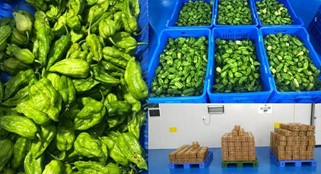
Source:
- Nagaland "King Chilli" Exported To London. Minister Recalls Market Visit
- King Chilli ‘Raja Mircha’ From Nagaland Exported to London for the First Time
- Nagaland's King Chilli ‘Raja Mircha' Exported To London for The First Time
Image Source:
Why CBDC (central bank digital currency) will not end bitcoin’s reign
Essence: A sudden sense of emergency to launch official digital currencies can be seen from global central banks. With reference to India, RBI seems serious about launching the same. However, not all central bankers are convinced about the need of CBDC because lack of clarity regarding its benefits and potential risks to the financial system. Article further mentions reasons why central banks are moving towards CBDC & types of private virtual currencies available globally with their pros and cons. Article also discusses the potential challenges that Indian CBDC can face. Hence, we need to put together a robust technological infrastructure since these will be vulnerable to cyber-attacks. But as far as the bitcoin and other cryptos go, their reign will not come to an end due to these official digital currencies.
Why should you read this article?
- To get an overview of CBDC and issues associated with the same.
- To understand India’s status regarding CBDC and challenges associated.
- To know what possible steps should be taken to tackle those challenges and why CBDC will not end bitcoin’s reign.
Source:
The wings of Pegasus, the epoch of cyberweapons
Essence: The article, written by former NSA MK Narayanan speaks in details about cyber threats, cyber weapons and in specific about the spyware Pegasus. The arena of warfare that was in the dimensions of air, water, land, and space has now come to the fifth zone of cyber space. The threat sits with us at our homes with digital ecosystem around us.
The article talks about evolution of cyber-attacks giving various examples around the globe. Dealing with such kind of threat needs a deeper understanding into the mindset of creators of such weapons and a whole new ecosystem of legislations and enforcement of technology innovations.
Why you should read this article?
- To understand the evolution of cyber warfare.
- To understand the nuances of spyware Pegasus.
- To gain insights into various dimensions of zero day threat and zero click attacks.
Source:
Mirabai Chanu: The Rising star
Humble background with high aspiration
- Mirabai comes from a family of humble background. Her father worked as construction worker while mother runs a small tea stall.
- The story to become a weightlifter began when she despite being younger to her brother carried a bundle of firewood which her brother could not lift it.
- To realise her aspirations, she worked hard and could not even meet her family during training sessions.
- After winning the medal she went to meet the family after 2 years.
- Her parents showed enough faith in her and made a lot if sacrifices so that she could reach at this level.
Values upheld
- Grit, perseverance, courage, simplicity, simple living high thinking, never die attitude.
Where to use?
- Use this as an example in ethics paper
Source:
Share the article
Get Latest Updates on Offers, Event dates, and free Mentorship sessions.

Get in touch with our Expert Academic Counsellors 👋
Frequently Asked Questions
UPSC Daily Current Affairs focuses on learning current events on a daily basis. An aspirant needs to study regular and updated information about current events, news, and relevant topics that are important for UPSC aspirants. It covers national and international affairs, government policies, socio-economic issues, science and technology advancements, and more.
UPSC Daily Current Affairs provides aspirants with a concise and comprehensive overview of the latest happenings and developments across various fields. It helps aspirants stay updated with current affairs and provides them with valuable insights and analysis, which are essential for answering questions in the UPSC examinations. It enhances their knowledge, analytical skills, and ability to connect current affairs with the UPSC syllabus.
UPSC Daily Current Affairs covers a wide range of topics, including politics, economics, science and technology, environment, social issues, governance, international relations, and more. It offers news summaries, in-depth analyses, editorials, opinion pieces, and relevant study materials. It also provides practice questions and quizzes to help aspirants test their understanding of current affairs.
Edukemy's UPSC Daily Current Affairs can be accessed through:
- UPSC Daily Current Affairs can be accessed through Current Affairs tab at the top of the Main Page of Edukemy.
- Edukemy Mobile app: The Daily Current Affairs can also be access through Edukemy Mobile App.
- Social media: Follow Edukemy’s official social media accounts or pages that provide UPSC Daily Current Affairs updates, including Facebook, Twitter, or Telegram channels.

